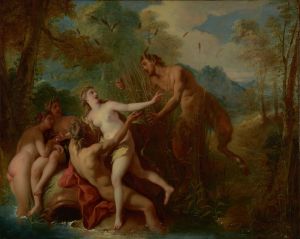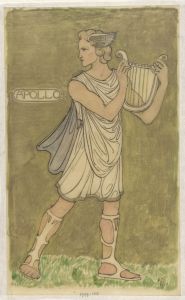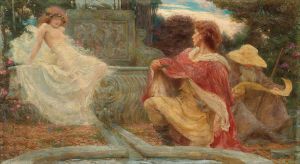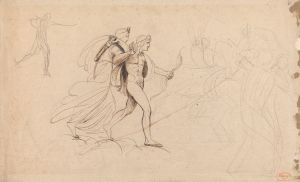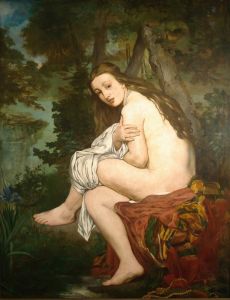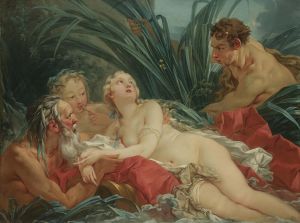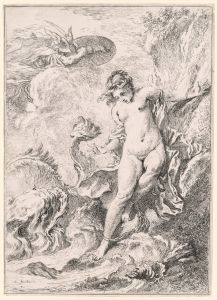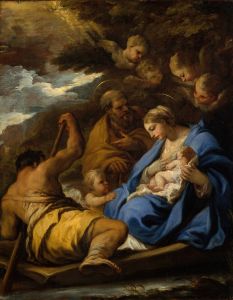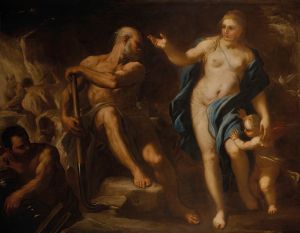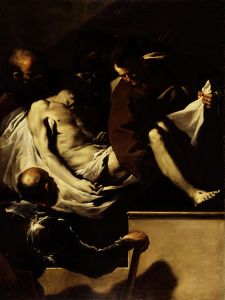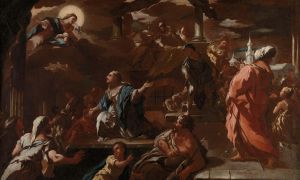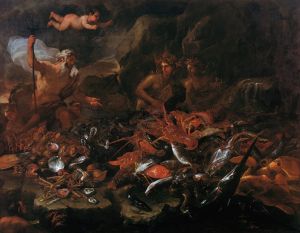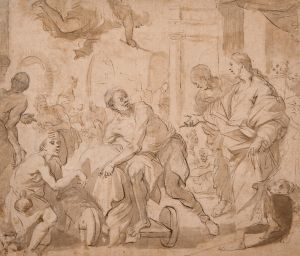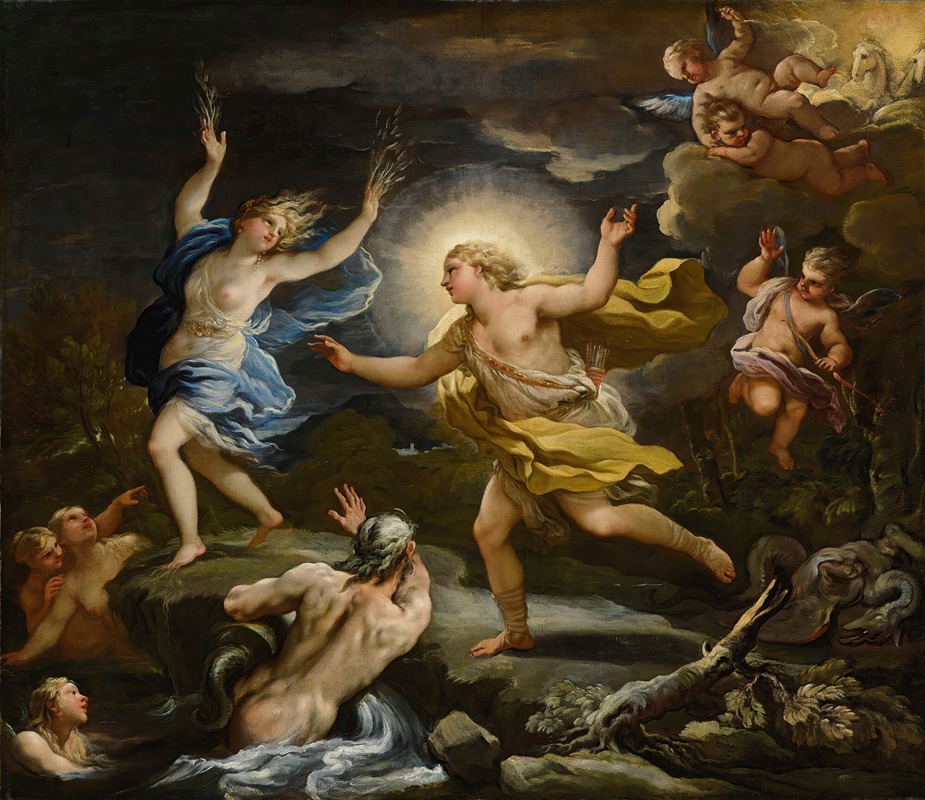
Apollo And Daphne
A hand-painted replica of Luca Giordano’s masterpiece Apollo And Daphne, meticulously crafted by professional artists to capture the true essence of the original. Each piece is created with museum-quality canvas and rare mineral pigments, carefully painted by experienced artists with delicate brushstrokes and rich, layered colors to perfectly recreate the texture of the original artwork. Unlike machine-printed reproductions, this hand-painted version brings the painting to life, infused with the artist’s emotions and skill in every stroke. Whether for personal collection or home decoration, it instantly elevates the artistic atmosphere of any space.
Luca Giordano, an Italian Baroque painter, created the artwork "Apollo and Daphne" around the late 17th century. Giordano, born in Naples in 1634, was known for his rapid painting style and prolific output, earning him the nickname "Luca Fa Presto" (Luca, Work Quickly). He was heavily influenced by the works of Pietro da Cortona, Jusepe de Ribera, and the Venetian colorists, which is evident in his dynamic compositions and vibrant use of color.
"Apollo and Daphne" depicts a scene from Ovid's "Metamorphoses," a classical mythological narrative. The story involves Apollo, the god of the sun, who falls in love with the nymph Daphne after being struck by one of Cupid's arrows. Daphne, however, is struck by an arrow that makes her flee from Apollo's advances. As Apollo pursues her, Daphne prays to her father, the river god Peneus, to save her. In response, Peneus transforms Daphne into a laurel tree just as Apollo catches up to her.
Giordano's interpretation of this mythological moment captures the dramatic climax of the chase. The painting typically shows Apollo reaching out to Daphne, who is in the midst of her transformation. Her fingers and limbs are often depicted turning into branches and leaves, symbolizing her metamorphosis. Giordano's use of light and shadow, along with his fluid brushstrokes, enhances the sense of movement and urgency in the scene.
The composition of "Apollo and Daphne" by Giordano is characterized by its dynamic arrangement and the emotional intensity of the figures. Apollo's expression is one of desperation and longing, while Daphne's face reflects fear and resignation. The background often includes lush landscapes, which serve to emphasize the natural setting of the myth.
Giordano's work on this painting reflects the Baroque era's fascination with movement, emotion, and dramatic contrasts. His ability to convey complex narratives through his art made him one of the most celebrated painters of his time. "Apollo and Daphne" is a testament to his skill in capturing the essence of mythological tales and translating them into visually compelling artworks.
The painting is part of various collections and has been exhibited in numerous galleries and museums, showcasing Giordano's mastery and the enduring appeal of classical mythology in art. His works, including "Apollo and Daphne," continue to be studied and admired for their technical proficiency and artistic impact.
Luca Giordano's "Apollo and Daphne" remains a significant example of Baroque painting, illustrating the period's artistic tendencies and the enduring power of mythological storytelling through visual art.





